#quillwort
Explore tagged Tumblr posts
Video
n516_w1150 by Biodiversity Heritage Library Via Flickr: Billeder af nordens flora,. København,G.E.C. Gad's forlag,1917-1927.. biodiversitylibrary.org/page/10468097
#Finland#Pictorial works#Plants#Scandinavia#Mertz Library#The New York Botanical Garden#bhl:page=10468097#dc:identifier=http://biodiversitylibrary.org/page/10468097#Brasenføde#ISOËTES LACUSTRIS#lake quillwort#Merlin's grass#quillwort#flickr
3 notes
·
View notes
Text
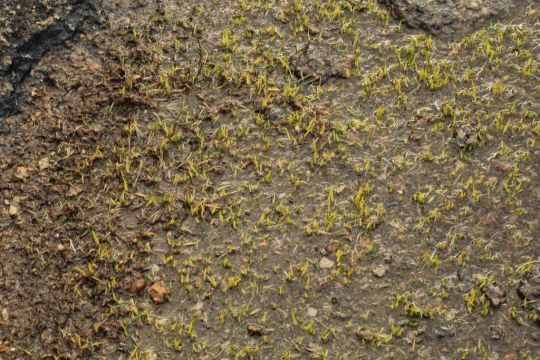
I've loved quillworts since i learned of thier existence but I've only just learned of tumblrs love of quillworts, they are hard to photograph, I have a degree in Fine Art and 2 weeks from a degree in Conservation Biology and I'm the defacto bryologist of my state* They are hard to photograph, at least in my state , the 9 species in WA overlap alot in habitat and morphology, despite destinct spore ornamentations. *Dm if u disagree I need someone who cares abt moss to talk to
4 notes
·
View notes
Text
there’s a weird isoetes population in a very remote spot I want to visit this summer just to see that it’s actually there... so I might be making a journey in a very literal sense in the next couple months
#it’s in a spot usually used by like. Hiker guys who are super into hiking on their way to a hiker guy point#now that I’m getting experience camping and working outside more and stuff I have higher hopes for my own achievement of this#or putting all my stuff on a mountain bike#isoetes#how did the quillworts make it there you might ask. dispersal is currently unclear but best current guess is animals/birds!
197 notes
·
View notes
Text






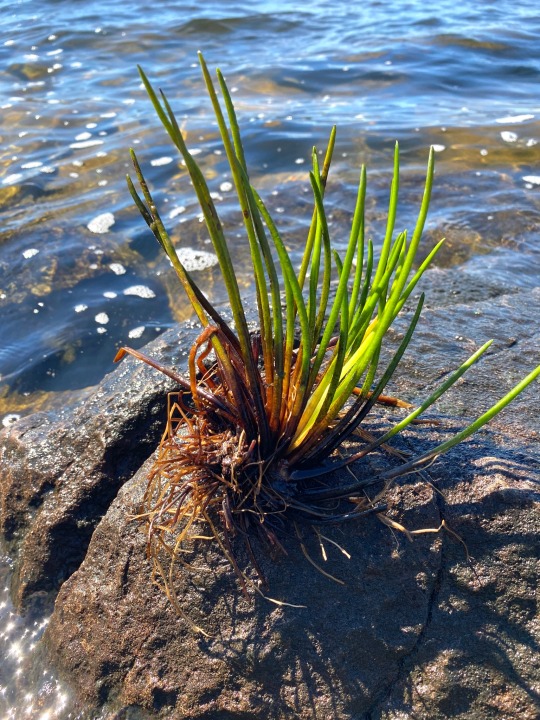
Came across my very first record of Australian quillwort: Isoetes gunnii. It grows in shallow water of a glacier lake in the central plateau of Tasmania.
38 notes
·
View notes
Text

(Image, as well as much of my information, from Carboniferous Giants and Mass Extinction by George R. McGhee Jr.)
Take a look at this tree. On a scale of 1 to 10, how weird do you think it is?
You quite possibly just gave it a 3 or a 4 or something. Sure, it's a little odd, but does look vaguely normal, right? A friend of mine guessed it was some sort of baobab when I showed him the image.
This is, in fact Lepidodendron, an ancient tree from the Carboniferous, and by modern tree standards it is absolutely bizarre. Its closest surviving relatives, quillworts and clubmosses, only grow to a height of a few centimetres, yet Lepidodendron were giants that shot up to 50 metres tall... Briefly, before dispersing their spores and completely dying off.
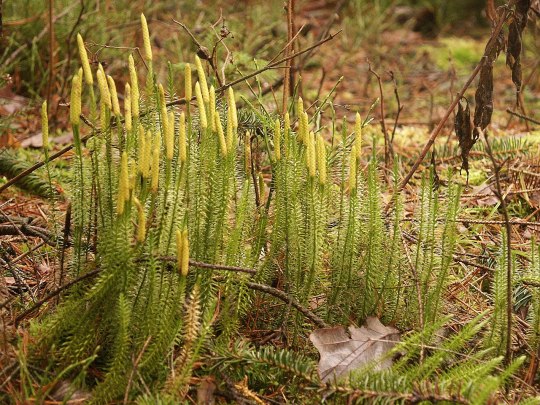
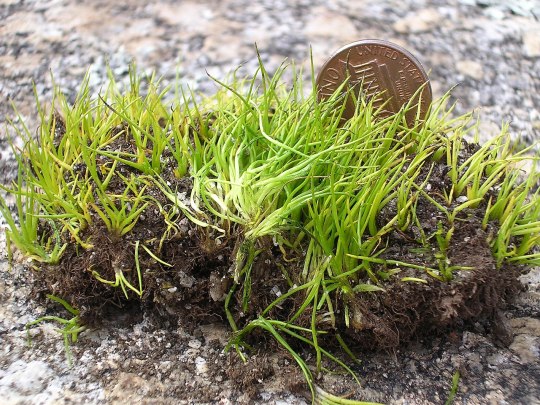
(Lycopodium and Spinulum, modern relatives of Lepidodendron, photos by Bernd Haynold and Pete Pattavina)
You see, Lepidondron lived like a gigantic dandelion. For most of its life, it was a stumpy little thing that stuck close to the ground. Just an odd scaly green stump with some long leaves poking out. The green scales its bark consisted of were the place it conducted its photosynthesis, and thus basically did the work of leaves. The Lepidodendron would stay like this for a couple years, slowly expanding its roots and getting ready for the next step. But its roots would grow mostly horizontally, down not so much! And part of why is that even they had the scaly leaf-like photosynthetic bark. That's right, even their roots could - and to some extend needed to - photosynthesise!

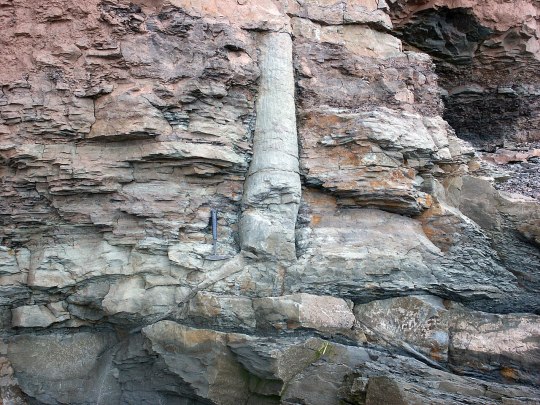
(Fossil Lepidodendron bark in the National Museum of Brazil, photo by Dornicke; a fossilised relative of Lepidodendron with some of its roots visible, photo by Michael C. Rygel)
So why would you ever try to photosynthesise with your roots of all things as a plant? Surely it would make much more sense to just transport the sugars created in other parts there than to have your roots be so shallow that bits of them can catch a little light and make it in situ? Sure, if you're capable of that! This is what modern trees do, but they have two separate vascular tissues they use for transport: xylem, which moves water from the roots to the rest of the plant, and phloem, which moves sugars and other photosynthetic products from the leaves to the rest of the plant. Unfortunately for Lepidodendron, it only had xylem, no phloem, so its sugars were only ever going to move as far as they could diffuse, so every part of the tree needed to have at least a little photosynthesis happening, even the roots.
This truly gets ridiculous when the Lepidodendron decides after a few years of charging up that it's time to reproduce. That's when the weird green stump we have so far starts shooting up, up, up, very quickly, all the way until an enormous 40 or 50 metres in height. Now, modern trees grow this large by being supported by a sturdy wooden core, but that's not what Lepidodendron did. To hold up the entire tree, it relies entirely on its outer bark thickening as it grows. In mechanical terms, it was little more than a huge hollow pole, probably creaking and swaying terribly in the wind. Although I have not been able to confirm this in the literature so far, I suspect that between the shallow roots and the whole thing being held up by its bark, you could probably total a Lepidodendron with a good kick.
Now remember, all this growth is happening without phloem, so the entire length of that stem has to not just be sturdy enough to keep the tree standing, but it also has to keep doing photosynthesis to feed itself. When it reaches its full height, the top of the tree finally starts sprouting branches and small leaves, leaving it looking like the picture at the start. But those are not what it's all about for the tree: the cones that develop among them are. At a height of 50 metres, the spores produced by the cones can very easily be picked up by the wind and blown far, far away. Being spores, rather than seeds as modern trees have, they have no supplies built in whatsoever, so they need to get lucky to land in a spot that has immediate access to water. Luckily, there are a lot of those in the vast Carboniferous swamps, and with the trees doing so much work to spread the spores very widely, some of them are sure to find good spots. And then, with the spores dispersed, the tree is done for. The entire thing, which has just grown to the skies, dies off and soon comes crashing down.
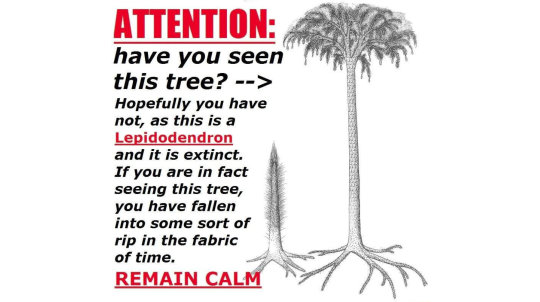
So how weird is this tree? I'd call it a perfect 10.
144 notes
·
View notes
Note
Here in your ask box to humbly request Cult Monster Horror
I will give you a snippet and a rough summery
Tamlin was lucky that Lucien cared enough to rescue him from the backwater swamp his friend had found himself in. He had every intention of forcing him to pay back the plane ticket and hotel cost. After he dragged him from whatever environmental breakthrough he believed he had found, of course. He had left two months ago and stopped responding to messages three weeks ago. While it wasn’t unusual for him to get so caught up in work that he ignored his phone, two weeks was cause for some concern.
Louisiana was miserable, too hot for early spring and the humidity had the hair around his face clinging to his skin. Tamlin never did his research anywhere that someone would consider a vacation spot. Even when he stayed in the country he found the smallest out of the way town he could to set up base camp. Lacombe was an hour from New Orleans across the damn lake that Tamlin claimed had the highest concentration of Louisiana quillwort. Lucien hated that he even knew the plant’s name. The town was so small he couldn’t even fly in. Lucien was positive that he was going to get eaten by locals one day.
Summary: Lucien goes looking for his environmental science major best friend on the shores of Lake Pontchartrain. And meets Cassian a local tour guide who claims to have taken Tamlin into the marsh weeks ago. Lucien wants to find his friend before he gets eaten by an alligator and Cassian can't stop talking about his mysterious girlfriend that Lucien is half sure he is making up.
3 notes
·
View notes
Text
OC name origins tag
TY for the tag @phoenixradiant @tildeathiwillwrite
I’ll be doing the youngsters from A Feather in the Forest for this one:
Ivy-
This may sound boring, but the reason for me choosing this name is because this is a plant that is common, at least where I live. As a name, it sounds nice, and fits the naming system I created for the story.
Rail-
As I have mentioned, most of the names are derived from nature. Well, there are a few exceptions to this. (In case anyone asks, yes I know about the birds, but it would not make sense for a fox to have a bird based name) The reason for some of these names not fitting in with the rest will have to wait. If I try to explain it, I’d end up spoiling a few things.
Quill-
This is an interesting one. You might expect that I had the inspiration from the quill (feather) of a bird, but I didn’t. Wouldn’t make sense. Instead I sourced this one from the quillwort (a vascular plant of shallow waters, related to club mosses).
Nettle-
Why did I choose this name? Well, the nettle is a fascinating plant. Most people are familiar with getting the sting of the plant, but there is more to it than that. Nettle fiber can be used to make fabric, and the plant has been used for food and medicine.
Leaving this tag open for anyone who wants to join in
#tag game#open tag#writing#creative writing#writer#writers#writers and poets#writing community#writer on tumblr#writeblr#current wip#the crow and foxfolk series
3 notes
·
View notes
Text
Sounds like a super fun class! With quillworts and duckweed, you're aure to find some cool stuff. Maybe you can find some other cool lycopodiaceae- i spent a lot of time keying lycopodes over the past 4 mnths and its REALLY fun. They have the best texture. Fun to touch / 10
had my first day of plant systematics today and man. I'm so excited for this class. Day one and I received two pieces of information that blew my socks off in two different ways:
1. We will be going to see Isoetes in the field! and
2. Duckweed (Lemna) is in the freakin' ARACEAE family?!?!? Yknow. Corpse flower and skunk cabbage? Calla lily? Thermogenesis? Stinky? LARGE and in charge? And this is why morphological classification is on such thin fuckin ice. Man. I'm reeling. I love learning new things about plants because they will ALWAYS surprise me.
52 notes
·
View notes
Text


Quillworts in a gnamma hole in Western Australia
A gnamma hole is a depression formed in granite or other very hard and inert rock that is formed from chemical weathering over millions of years, the name comes from noongar languages of the indigenous peoples of the southwest of Western Australia. Whilst restricted to tiny areas very distantly spaced, Quillworts are relatively easy to find in Western Australia, if you visit the right outcrops at the right time of year you will see them reliably every time.
It is not easy to identify a quillwort to a species in Western Australia without destructively collecting and dissecting a specimen as all the currently described species overlap significanty in morphology depending on growing conditions.
If you want to see a quillwort IRL and are willing to travel to Western Australia let me know because I can provide directions and coordinates or meet IRL because the extreme biodiversity in flowering plants here in SouthWest WA means the little quillworts get overlooked even by the most passionate of botanists.
This gnamma hole was in a ~1.5 billion year old granite bedrock outcropping in Cape Le Grande near Esperance https://www.inaturalist.org/observations/171702188
2 notes
·
View notes
Text
Reply-Reply to Purified-Zone: WWTCLD?

BOTANICAL KNOWLEDGE!!!
2 notes
·
View notes
Note
📙 What kind of subjects (of conversation, of discussion, in school or whatever) does your OC find interesting or engaging or that they can talk for hours about? What kind of stuff do they just find fun? (For Tuss)
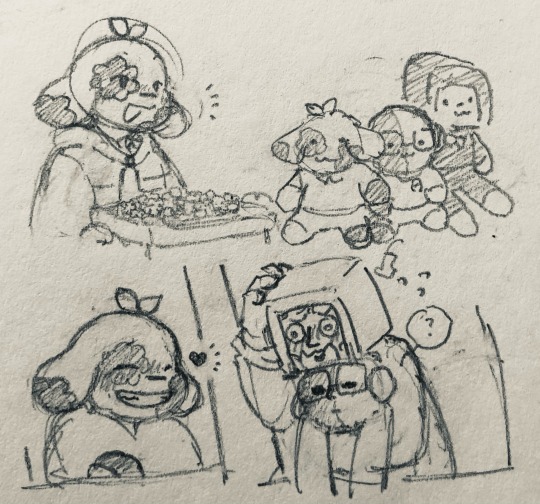
tuss: well… i have this lil box of tiny flowers! they’re small and good! i also have these plushes. Tamizi made them! she would tell you they’re lumpy and just ok, but i think they’re wonderful! very soft and huggable. 10/10!! aaaand i could talk about takumi and rei a lot too. they are both a bit shy when it comes to talking about themselves…
takumi (+rei): eh er well!! i-it’s! um! aaaaa

stuff for fun… i doodle small stuff sometimes. i like hanging out with friends and being comfy! and sometimes i flop around..

er. where these two come from? (i don’t mind, but??)
quill: well, you’re comfy to be around too (lol)
#ask response#tuss ls#pencil sketch#rhythm heaven oc#pelswitchers are by pelmandna#pelswitcher#stepswitcher#tall tapper#character plush#pencil doodles#doppio ls#motcha ls#quill ls#quillwort ls#tussock ls#takureituss#random stuff#cute#oc ramblings#kinda#cupcakes and daydreams#reikanocs#reikan art#doppio (ls)
6 notes
·
View notes
Text
Terms derived from wort
maywort
meadowwort
milkwort
miterwort
mitrewort
modiwort
moneywort
moonwort
moorwort
motherwort
moudiewort
moudiwort
mountain spiderwort
mowdiewort
mudwort
mugwort
mulewort
nailwort
navelwort*
nettlewort
nipplewort
peachwort
pearlwort
pennywort*
pepperwort
peterwort
pilewort
pillwort
pipewort
quillwort
quinsywort
rattlewort
ribwort
rosewort
rupturewort
saltwort
sandwort
sawwort, saw-wort
scorpionwort
scurvywort
sea milkwort
sea ragwort
sea sandwort
setterwort
sicklewort
sleepwort
slipperwort
sneezewort (Achillea ptarmica)
Terms derived from wort
adder's wort (Bistorta officinalis)
adderwort (Bistorta officinalis)
asterwort (Asteraceae spp.)
awlwort (Subularia aquatica)
banewort
barrenwort (Epimedium alpinum)
bearwort (Meum athamanticum)
bellwort
birthwort
bishop's-wort (Stachys officinalis)
bitterwort
bladderwort
blawort
bloodwort
blue throatwort
blushwort
bogwort
boragewort
bridewort
brimstonewort
brotherwort
brownwort
bruisewort
bugwort
bullwort
burstwort
butterwort
cancerwort (Kickxia spp.)
catwort
clown's ringwort
colewort
common ragwort
coralwort
crosswort
damewort
danewort
dragonwort
dragon's wort
dropwort*
dungwort
earwort*
ebony spleenwort (Asplenium platyneuron)
elderwort
European pillwort
fanwort
felonwort
feltwort
felwort
26 notes
·
View notes
Text
curse my anxiety for preventing me from leveraging my terrifying ability to make popular posts into being the kind of person who can get internet strangers to send me model dinosaurs
#my posts#i have a kind of terrified awe for online creators who are brave enough to have fanmail PO boxes and whatnot#the other day my dad told me I ought to start a youtube channel#because I was excitedly talking to him for like half an hour about quillwort and stromatolites#and I really miss being a part of an informational environment but I can't work because of The Difficulty#and I was thinking about it and then I thought about how one of my favorite creators opened a PO box#and literallly the first thing someone sent him was a bottle of thick water#for no reason. no explanation. just thick water#anyway I miss being a librarian
16 notes
·
View notes
Text
They're called lycophytes because everyone likes them
#clubmoss selaginella tassel ferns quillwort the best plants to exist <3#I'm learning how to propagate plants from spores just to get clubmoss because I actually can't find it for sale anywhere. and it's#moderately common in some parks and you can collect the spores so...#(turning up to history class on wednesday with a bunch of ferns and my friend was like why do you have ferns. and I was like well I had a#free period before lunch so I went to the hardware store to get peat for growing clubmoss so I can give my room a devonian ambience and she#was like of course you go to the hardware store at lunch and get ferns.)
12 notes
·
View notes
Text
WIP world building

Naming conventions among the foxfolk
Among the foxes of the five villages, names are a significant part of one’s identity. Preferences vary to the point that it is said that one can identify the village a stranger was born in based on their name alone. While generally true, this is not a hard and fast rule, as the names of family members often share the same theme, even long after they have moved away from their original home.
A fox is given their name on the day of their birth. Usually it is based on a plant (such as Ivy, Sorrel, or Linden) or a biome (Fen, Steppe, or Taiga). Some names invoke cunning or a trickster (Robin, Puck, Floki, or Renerd), or the color red (Cinnabar, Rust, Rouge). Unique among the foxes whose lineage hails from the village of Silverdeep is choosing names based on rocks, minerals, and gemstones (Opal, Karst, Flint). There are some names whose origins are not known, and are connected to the precursors (Rail, Volt, Valve). As the Great Lake is a place the foxes fear, names based on water are rare, but a few do exist (Playa, Brook, Delta).
Last names are rarely used in daily life, and are usually only brought up when marriage is concerned (incest is a big no-no). Examples of last names include Quillwort, Tor, Longbank, and Wright.
Titles and suffixes can reflect the deeds one did (Freya Lake-runner), their position in society (Opal Tha), a characteristic or trait the individual wishes to convey (Laurel the Steadfast), or a term of endearment (Fen of a thousand stories).
#wip wednesday#worldbuilding wednesday#WIP#current wip#my wips#infodump#worldbuilding#writer#writers#writers and poets#writer on tumblr#writeblr
0 notes
Note
There are two wolves inside of you .. honestly extremely fair diversion though! I still struggle to comprehend that quillworts reproduce by spores
I always wished you had room to do like a mini dis every year at uni- give me the power to write about the political consequences of increasing seaweed farming!!
I would just like to say that ur lichen advocacy brings so much joy to my heart! As someone who was told to stop writing about lichens or fail an essay (it was a politics module in fairness), it brings me great joy
omg I was also denied lichens as the topic of an essay in college (was supposed to be an essay on a vascular plant family, I tried to bargain by saying i would just do it on algae symbiotes, professor said no, algae isn’t a vascular plant which is fair) so i picked isoetes instead which is really funny in hindsight because like

540 notes
·
View notes